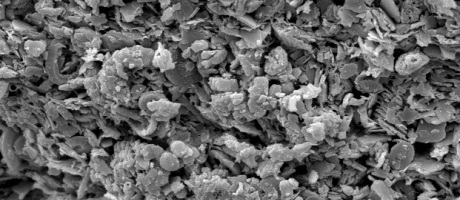Improved Recovery from the Tight Lower Cretaceous Reservoir
The aim of the programme was to improve the recovery of oil from the tight Lower Cretaceous reservoir. Using a multidisciplinary approach, the researchers have improved the fundamental understanding of the low permeability and inhomogeneous reservoir.

Historically, oil production in the North Sea has primarily come from the Upper Cretaceous reservoirs, providing extensive knowledge about these layers.
During development of the deeper and less permeable Lower Cretaceous reservoir, it proved difficult to build a strong understanding of and deliver accurate predictive models for forecasting, field management, and development decision-making.
This research programme was initiated to unlock the remaining potential of already developed fields as well as undeveloped areas.
Geological Setting
An important part of the research was to improve the capability to predict where hydrocarbon volumes are located. Compared to the Late Cretaceous, the Early Cretaceous had relatively large and varying supply of clay deposited with the chalk. As a result, the Lower Cretaceous reservoir alternates between chalk, marly chalk, marlstone, and claystone and making both the lateral and horizontal distribution highly inhomogeneous.
A wealth of different data was produced to aid the interpretation and guide an updated stratigraphic and structural framework. This was then incorporated into a 4D forward stratigraphical model using DionisosFlow.
This showed that forward stratigraphic modelling can provide an alternative workflow to traditional stochastic reservoir modelling workflows. The model can provide various uncertainty maps and reservoir indications to be incorporated into static 3D models, providing a predictive tool for potential developments.
Productivity control
Extracting the hydrocarbons requires an increased understanding of which rock properties improve the recovery potential and which properties limit the fluid flow. The high presence of clay particles influences fluid flow through the rock; an improved permeability model, which accounts for this heterogeneity, has been developed.
In addition, work was done to understand how this layered, clay-rich reservoir reacts as oil is produced. For example, how fractures in the layered rock change the flow patterns, what the consequences are as the rock compacts during depletion and how production affects the 4D seismic signal and thereby the interpretation of remaining oil and gas.
Finally, the feasibility and effect on gas injection as a potential EOR method was tested. This included making an updated experimental procedure as core plugs from Lower Cretaceous are very delicate and fragile. Consequently, for these studies new selection criteria, cleaning and handling procedures were developed with very good results.
Multidisciplinary approach
This study integrated many disciplines and researchers worked together across academic institutions. During the time span of the programme, more than 65 researchers have been involved and seven PhD`s have finalized their thesis. Data, results, and learnings have been shared and has continuously been discussed between the research groups and industry ensuring directly applicable results.
Contact
Ulla Hoffmann Programme Manager Danish Offshore Technology Centre Mobile: 9351 1360 uhoff@dtu.dk